Mark Sisson's Blog, page 262
May 9, 2015
Cumin & Coriander Lamb Stir-Fry
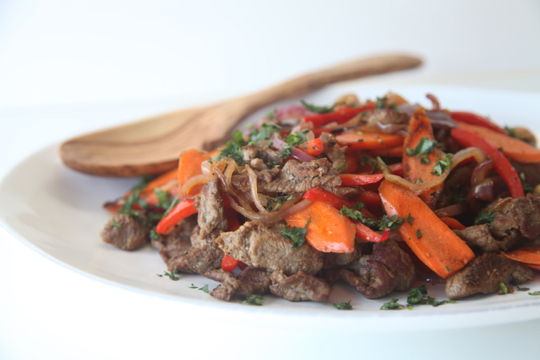 Stir-fries are a perfect weeknight meal. A stir-fry has meat, it has veggies, and everything is sautéed quickly in the same skillet (or wok). But when your stir-fry starts tasting the same, week after week, it’s easy to get bored. One simple way to change-up your standard stir-fry is to skip beef, pork and chicken and go for lamb instead.
Stir-fries are a perfect weeknight meal. A stir-fry has meat, it has veggies, and everything is sautéed quickly in the same skillet (or wok). But when your stir-fry starts tasting the same, week after week, it’s easy to get bored. One simple way to change-up your standard stir-fry is to skip beef, pork and chicken and go for lamb instead.
It’s funny that lamb is rarely used in stir-fries because it’s really very good. Lamb tastes great with most Asian-inspired marinades and sauces, and it’s also really delicious if you want a whole new kind of stir-fry, one flavored by toasted cumin and coriander seeds, the warm heat of Sichuan peppercorns and fresh, cool herbs.
Besides offering variety and great flavor, grass fed lamb is near perfect meat, containing all 8 essential amino acids, several B vitamins, niacin, zinc, iron and lots of conjugated linoleic acid (CLA). Here in the US, lamb is often overlooked at the meat counter or saved for a special occasion. But this lamb stir-fry recipe shows how easy it is to work lamb into a regular weeknight meal: slice it thinly, season it, and throw it in a hot skillet for just a few minutes. Other easy-to-make and easy to love lamb meals are harissa lamb chops, lamb meatballs, and lamb stew.
Servings: 4
Time in the Kitchen: 45 minutes
Ingredients:
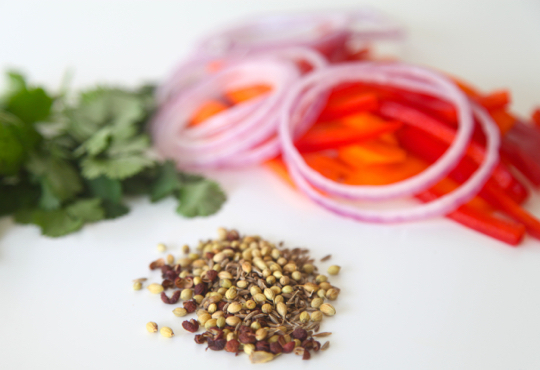
1 1/3 pounds boneless leg of lamb, cut into very thin strips (600 g)
2 teaspoons cumin seeds (10 ml)
1 teaspoon coriander seeds (5 ml)
1 teaspoon Sichuan peppercorns (5 ml)
2 garlic cloves, pressed or finely chopped
½ teaspoon salt (2.5 ml)
3 tablespoons melted coconut oil, divided (45 ml)
1 red onion, thinly sliced
2 carrots, thinly sliced
2 red bell peppers, thinly sliced
2 teaspoons red wine vinegar (10 ml)
1/3 cup finely chopped fresh cilantro (80 ml)
2 tablespoons finely chopped fresh mint (30 ml)
Instructions:
Heat cumin and coriander seeds and peppercorns in a skillet over medium-high heat until fragrant and lightly toasted, about 2 minutes. Let cool, then transfer to a spice grinder/coffee grinder to very finely chop (or use a chef knife).
Mix the spices with 1 tablespoon/15 ml coconut oil (or olive oil) and the garlic and salt. Rub the mixture all over the lamb slices.
Heat a large skillet over medium-high heat until the pan is really hot. Add 2 tablespoons of coconut oil. Once the oil is hot, cook the lamb in two batches so the pan isn’t overcrowded, adding more coconut oil for the second batch if needed. Each batch of meat should be nicely browned on both sides in little more than 4 minutes.
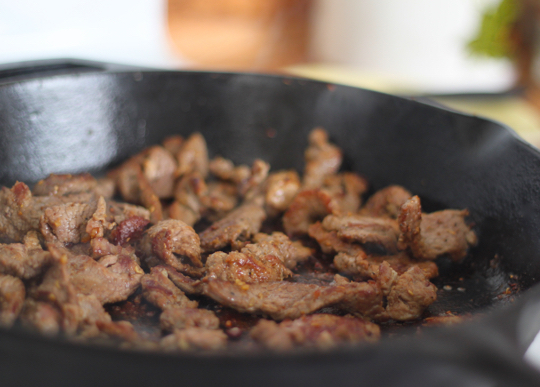
Transfer the lamb to a serving platter and set aside. Add the carrots and red onion to the skillet. Add more oil if needed. Cook until onions are just getting soft, about 5 minutes.
Add the bell pepper. Cook a few minutes more.
Add the lamb back to the skillet. Drizzle in the red wine vinegar. Cook just a minute or two until the vinegar cooks off the meat is heated.
Add cilantro and mint before serving.
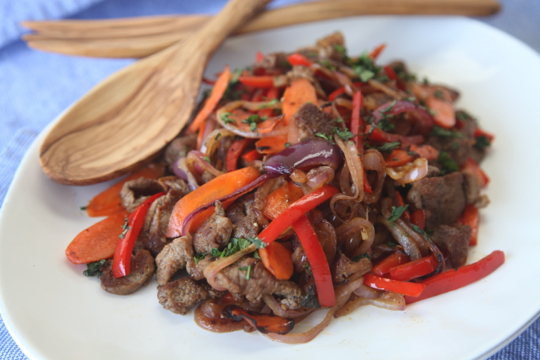
Not Sure What to Eat? Get the Primal Blueprint Meal Plan for Shopping Lists and Recipes Delivered Directly to Your Inbox Each Week



May 8, 2015
From “Silly Fad” To Life-Changing Transformation
It’s Friday, everyone! And that means another Primal Blueprint Real Life Story from a Mark’s Daily Apple reader. If you have your own success story and would like to share it with me and the Mark’s Daily Apple community please contact me here. I’ll continue to publish these each Friday as long as they keep coming in. Thank you for reading!
 So, I used to make croissants for a living.
So, I used to make croissants for a living.
I ran a small bakery, actually — but the croissants were really the stars of the show. They were cosmic; people would stand in line to buy them by the dozen. I loved them, too… especially toasted with extra butter and jam. They were, in fact, my primary fuel, along with coffee (of course!).
You would think that running around a hot kitchen all day, serving customers, and dealing with the general chaos that is food service, would burn enough calories to keep one in relatively good shape. Unfortunately, it became clear to me with the addition of twenty five extra pounds (on my 5’0″ frame), that was simply not the case. I was unhappy about the weight gain, but I chalked it up to an occupational hazard.
Then, a funny thing started to happen. I would get these strange customers that would bypass the croissants and other sweets, telling me they were trying to cut back on bread. Or they would ask if I carried anything gluten-free. I would smile and shake my head, trying not to roll my eyes. What a crazy fad, I told myself.
Then life happened.
I got a new (office) job. My boyfriend proposed, and I started planning a wedding… and thinking about having a baby. Although it wasn’t an immediate concern, I knew that I wanted to have the best chance of having a healthy pregnancy when the time was right. Having a healthy body composition would be an important aspect of that.
While few things can be said about the health benefits of office work, once I wasn’t surrounded by baked goods all day, I started to realize that I felt kind of… well, like I overdosed on bread. I didn’t want to think about another muffin, or cookie, or croissant. I started to wonder if there was any credence to the hold-the-bread movement. Enter Mark’s Daily Apple.
I devoured everything on Mark’s site, and right away I felt an intrinsic truth to it. It was simple, and it made sense. I was impressed with the number of scientific papers cited, which soothed my skeptic’s mind. I jumped on board, with only a few days of post-grain haze. And while it’s been far from smooth sailing — my now-husband and I have had some rather… lively discussions about “food groups” and “everything in moderation, including junk food” — the results speak for themselves. I’ve lost approximately 30 pounds this past year, while decreasing my body fat percentage from over 30% to 23%. And I can see the beginnings of abs! (They’re so cute!)
 In addition, I have consistent energy all day (unlike some of my grain-eating office mates…) and my self esteem had really taken a boost. I’ve even started working out in leggings, something that would have have inconceivable before I started this. The success I’ve seen has given me the confidence to make more positive changes in my life, including yoga and meditation, which have allowed me to manage my stress and be more emotionally observant. Some days I feel a little too crunchy-hippie for my own good.
In addition, I have consistent energy all day (unlike some of my grain-eating office mates…) and my self esteem had really taken a boost. I’ve even started working out in leggings, something that would have have inconceivable before I started this. The success I’ve seen has given me the confidence to make more positive changes in my life, including yoga and meditation, which have allowed me to manage my stress and be more emotionally observant. Some days I feel a little too crunchy-hippie for my own good.
And while I don’t have good news to report (yet) about a little bundle of joy, my doctor was impressed at the progress I’ve made with my health (her computer threw her an error when she’d typed in my weight, thinking she’d made a typo!). I’ve become a lot more open-minded when it comes to different ideas about optimizing health; I’ve realized that even something that I’ve dismissed earlier as a “silly fad,” might actually bring be closer to my goals. I’m hopeful for the future, and I feel like I have a leg up on whatever life throws at me.
P.S.: One more revelation: baked goods really don’t taste all that good. 
Allison




May 7, 2015
The Primal Community Is More Diverse Than You Might Think
 We’re cavemen/women-wannabes, deluded health nuts, nonconformist cynics, shameless meatlovers, barefoot rabble – the list goes on and on. People who don’t know any better may assume a lot of things about us. We’ve probably all been in these situations by now, right?
We’re cavemen/women-wannabes, deluded health nuts, nonconformist cynics, shameless meatlovers, barefoot rabble – the list goes on and on. People who don’t know any better may assume a lot of things about us. We’ve probably all been in these situations by now, right?
If you asked random people on the street about their perceptions of Primal/paleo adherents, I’d venture to say that a lot of them would say we’re beefy single men in our 20s – maybe 30s – who spend our days in the gym. Kinda funny, since the majority of MDA readers (by about 10% anyway) are actually women. And last time I checked not all of us – my “old” self included – have seen 30 in a while. We’re not all Californians or even warm weather folk who spend our days shirtless and surfing (even though the barefoot shoe fits this guy). Many of us, in fact, weather winters cold and long enough to mirror the worst ice age.
In fact, a substantial percentage of us aren’t even from the U.S. – or from North America. We’re from over 50 countries across nearly every continent (still holding out for the Antarctic contingent). We look out our windows and see tundra – or mesa, or ocean, or mountains, or farmland, or forest, or cityscape, or suburbia, or swampland. We’re in different time zones and seasons because we span literally every end of the earth. Not surprising given all these facts, we claim varying creeds (including no-creed) and many different ethnic identifications.
There has actually been research to this effect. (Yup. Apparently, we’re finally common – or maybe just fascinating – enough to warrant study.) There have been a couple collections of crowdsourcing – first with 1100 people and then with almost 2900.
And then there was this more highbrow survey, which winnowed down a relevant sample size of roughly 4000. In the Journal of Evolution and Health, two researchers detailed the results of what they called “the first academic survey of the ancestral health community.” (It even has some fun stuff about the most common stereotypes of Primal/paleo adherents.)
Primal, of course, is its own subgroup and maybe even subculture within the larger ancestral community (and apparently biggest among the paleo set according to the crowdsourcing data at least). That means not all the stats they ran quite match up with what we see, but most of the larger patterns are similar. While certain pockets exist where more people identify themselves as Primal, we genuinely are all over the map as they say – from the U.S. to Australia, Ireland to India, South Africa to New Zealand. Just how many people use MDA resources in a year? Suffice it to say it’s millions upon millions.
But here’s the thing. I can look at survey or crowdsourcing results broken down into global maps, ethnic categories, and age ranges, but the information that will always interest me the most is why – why people are drawn to the Primal community or even just the Primal ideas.
According to the survey, the top reasons people aligned themselves with the Primal/paleo way included weight loss, illness recovery, family (children’s) health, disease prevention, overall health, mental performance, weight/muscle gain, environmental reasons and fertility.
It’s not an exhaustive list, but certainly these answers (particularly considering the blanket choices such as “overall health”) encompass the majority of basic motivations for why people try a Primal Blueprint diet or choose a Primal lifestyle.
And yet even beyond the demographic breakdowns, even these motivational lists can’t begin to tell the full story – not as I see it.
Because the larger “story” is ultimately about individual stories. I started living and coaching Primal so long ago, I was doing it in person with clients for years. I read what little there was available and connected with the few people who were beginning to write about it. I learned the science, but most of all I witnessed the transformations.
I knew when I started this site eight years ago that I wanted those stories to be a chief focus. I wanted community to be second only to strong content. I had these priorities because I felt the simple, unmatchable power of hearing – or reading – another person’s story.
It’s more than just before and after photos, bigger than mere numbers. It’s the nuances of where people came from and what got them from A to B. What cultural or familial diet did this person grow up with? What did this person learn about exercise or active play in his/her childhood? What body images messages were prominent? What were the stressors at work in his/her life? What were that person’s biggest disappointments, most frustrating detours or most sabotaging misunderstandings or self-talk? Regardless of the person’s age, how many years had he/she dreamed of living well again?
What sources of optimism or impetus kept him or her believing in more? What diagnosis, tragedy or example made it personal for him/her? What stubborn goal survived? What message or example was he/she determined to offer the kids? If he/she could be any kind of athlete, what kind would that person be? How did that person desperately want to him/herself? What was the first action that person took that changed his/her course? What was the second? What did he/she do that a month ago seemed impossible? What image or affirmation got him/her up at 5:00 a.m. each day?
And as that person was making it happen – living in his/her vitality again, what did the specifics look like with his/her personal imprint? How did he/she blend a favorite regional cuisine with Primal principles? What activities brought joy as well as fitness to his/her life? What achievements or benefits came as a surprise? What did he/she want to tell that younger self – and everyone who was still contemplating making the Primal change?
What were the turning points, the stumbling blocks, the linchpins, the embarrassments, the conquests, the mentors, the resilience-builders?
We come to Primal from countless different experiences and vantage points. Some of us are so young we’re balancing the rules of our parents’ homes with our own health vision. Some of us are old enough that we feel this might be our last chance to turn our lives around. We might be starting from zero or we might be ditching a health path that took us in a direction that didn’t work anymore. Some of us are elite athletes. Some of us are disabled. Some of us are both.
We exercise a million different ways in a given day. Some of us can’t do it without others, while others insist on working out alone. Some of us couldn’t live without the gym, while others of us wouldn’t ever set foot in one. Some of us fast, and others of us never will. The variety of food we eat – when you put all the national, regional, and individual creations together would boggle the mind as well as the palate.
We see different goals (and sometimes feel different frustrations) when we look in the mirror. We shoot for different carb intakes. We have individual food intolerances, are trying to get off varying medications, are overcoming deeply ingrained past thought and behavior patterns.
And, yet, we also find ourselves basking in different elements of the Primal Blueprint, feel motivated by certain messages, push into new individual territories of the PB, are excited by the prospect of varying practices related to our personal enrichment as well as physical health. Months and years of experience formulate for each of us our individual senses of what constitutes health integrity, self-actualization, lifelong vitality and the good life as we see it.
When you think of it this way, the diversity of the Primal community is as staggering as it is educating. Every story, every response, every experience gives me some new ways of seeing the Blueprint – and the community that contributes to its expansion and evolution.
Thank you all for being a part of it – and for reading today. Offer up your reactions and anecdotes. What surprises or inspires you about the diversity of the Primal community? Have a great end to the week.




May 6, 2015
How We’re Setting Our Kids Up to Be Fat, Sick, and Unhappy
 I’ve been on a bit of a “children’s health and wellness” kick lately, with a couple posts discussing the importance — and, unfortunately, dearth — of free play and exploration in our children’s lives. Some of you have speculated via email that Carrie and I have something to announce, but that’s definitely not the case. This is simply an important topic for everyone with a stake in the future of this world. The mental, physical, and spiritual health of our children today will determine our trajectory through history in the decades to come. If a fat, sick, and unhappy generation takes the reins of this planet, nothing good will come of it.
I’ve been on a bit of a “children’s health and wellness” kick lately, with a couple posts discussing the importance — and, unfortunately, dearth — of free play and exploration in our children’s lives. Some of you have speculated via email that Carrie and I have something to announce, but that’s definitely not the case. This is simply an important topic for everyone with a stake in the future of this world. The mental, physical, and spiritual health of our children today will determine our trajectory through history in the decades to come. If a fat, sick, and unhappy generation takes the reins of this planet, nothing good will come of it.
Also, those are our kids. Once you’ve popped one out, it’s your responsibility to give them the tools and environment they need to realize their potential. No, not a free ride. Not a hand-holding session. But we need to provide the things they, as infants, toddlers, and prepubescents filled with simmering stews of hormones, cannot. The incredible thing about smaller, less “mature” humans is that make pretty good decisions regarding health, fitness, activity, sleep, and every other lifestyle factor we seek to optimize on this blog if they’re in the right environment. No micromanagement required (in fact, micromanagement of our children is one of the biggest impediments to their healthy growth and development).
Okay, so what exactly is wrong with kids today? Why am I yelling at this cloud?
Their parents are told to ignore their instincts early on.
What’s the first thing a new parent feels like doing when they behold that wrinkly red humanoid that just sprang from the mom’s loins? Holding it close. Bare skin against bare skin. You don’t want to whisk your newborn off to the nursery, or have to wait patiently until a medical professional runs diagnostics and decides when you can hold him. You want that thing in your arms, right now.
And when you get home (or maybe you did it at home), you just want to fall asleep with your new family member in the same room as you. Maybe even in the same bed. You probably don’t want to leave your defenseless, utterly confused womb emigrant alone in an empty crib halfway across the house. You don’t want to hear distant cries. You want that burbling no-necked little monster making indecipherable coos, grunts, and farts (a necessary evil) onto your chest. But you ignore those instincts, because you’re not “supposed” to sleep with your baby. Unfortunately, you and your family may be missing out on some important, long-lasting benefits granted by co-sleeping.
Now, there’s absolutely nothing wrong with not co-sleeping. You don’t have to do it, and babies turn out perfectly healthy and happy and well-adjusted sleeping in their own beds. But if you want to co-sleep, don’t fight the urge. Don’t let the reigning conventional wisdom regarding baby sleeping arrangements dissuade you, because it’s not based on sound science. That instinct is a powerful one, and I think it’s probably important to heed it, particularly if you practice safe co-sleeping.
The important thing is that parents have lost trust in themselves. Don’t. Get it back. Because once you start second guessing your motherly or fatherly instincts, you’re going down a stressful path. To live in conflict with oneself is untenable and unsustainable. You can’t parent effectively like that.
They spend most of their time sitting still in chairs at school.
Kids are active beings. They don’t like to sit still. They love to run, jump, crawl, leap, climb, squat down to look at some bugs or build a teepee with sticks, lift rocks to see what lurks underneath, throw things (often at each other), dance, and laugh. Put one down in a large grassy area and you’ll see it for yourself. They need to move. And we wring it out of them every time they go to school. We force them into chairs for eight hours a day, which is perfect training for future office workers but terrible training for healthy human animals. What’s the number one problem in first world nation adults, according to many researches? We sit too much, and it’s killing us. So why do we force kids to do it when they’re at their most vulnerable and malleable? What do we think is going to happen when they grow up?
This is changing, slowly. On Weekend Link Love, I’ve linked to a number of classrooms doing trial runs with standing desks, and across the board they’ve been successful at improving kids’ focus and reducing behavioral incidents. And kids with ADHD who are allowed to squirm around on balance balls or ride stationary bikes in the classroom learn better. Kelly and Juliet Starrett are starting a nonprofit called StandupKids that hopes to revolutionize the way classrooms are set up, so be sure to check them out.
They spend most of their free time sitting in chairs and sofas at home staring at screens.
In 2010, the average time spent each day staring into electronic devices for 8-18 year-olds was 7.38 hours. A 2013 American Academy of Pediatrics’ study found that average 8 year-olds use electronic media for 8 eight hours a day and teens average 11 hours. If that sounds like a bad idea, it is:
Both kids with nighttime access to electronic devices (smartphones, tablets, etc) and kids with TVs in their rooms are more likely to be obese.
Kids who use electronic devices after school are more likely to stay up late and sleep poorly.
Kids who use electronic devices aren’t moving, playing, exercising, or interacting face-to-face with peers and parents.
They spend what little time remains sitting in chairs while being driven between home and school.
Independent mobility is down, way down. Rare is the sight of a kid biking or walking to school, the park, or just aimlessly on a lazy summer day. Now, cars pileup around the block to wait in line to drop individual kids off at school. Even if the parents wanted to let the kid walk there unassisted, half the time it’s not allowed by the school administration. Heck, Child Protective Services gets involved when a parent dares let their kids walk a half mile alone to the park, even though it’s never been safer to be a kid in the United States (and the same goes for most first world nations). Wealthy NYC parents are hiring play date consultants. We’ve managed to stifle, confuse, and disrupt one of the most powerful forces in the known universe: a child’s sense of play and desire to explore the surroundings. It’s utter madness.
When they do get to move around, they’re wearing heeled shoes.
Look, if you want to teeter around on heels as an adult, that’s fine. Nothing wrong with that provided you accept the consequences and maybe try to take some steps to ameliorate the effect it has on your lower limbs. But kids don’t buy their own shoes. For the first few years, they don’t even put on their own shoes. They don’t really have the choice.
For every positive degree of heel elevation, another joint along the kinetic chain has to compensate by a degree. Maybe it’s your knee, or your hip, or your lower back. Maybe it’s all of them. Whatever it is, even a slight heel throws the rest of your body out of alignment. You may be okay with that. You’re used to it. But we should give our kids the chance to start fresh and establish motor patterns without the altered input from heeled shoes. If they want to mess with their joint angles later, that’s on them. For now, keep your kid’s heels on the floor.
They eat too much sugar.
The other day I wrote about average sugar intakes around the world, and the averages for all ages were quite high. The kids are way, way worse. In the US, boys get 16.3% of their energy from added sugars alone. For girls, it’s 15.5%. Rates are similar across other nations.
In theory, kids should be able to get away with a little more sugar than adults, especially if it’s whole food sugar from something like fruit. But not if they’re sitting around all day, failing to realize their essential natures as living balls of kinetic energy, and not if they’re eating added sugar and missing out on all the nutrients that normally accompany sugar sources in whole foods. In today’s kids, just one daily serving of sugar-sweetened beverages is linked to a 60% greater chance of obesity.
They don’t get enough time in nature.
I’ve often said that nature is the default environment of the human genome. Our genes expect trees, grass, weeds, sand, desert vistas, rolling waves, gurgling brooks, rushing rivers, towering rainforests, and all the other things we associate with “the great outdoors.” Before agriculture (and for most people long after), that was the world. It wasn’t a separate place, the wild frontier we explored and conquered and today pay a fee to access. It simply was. And if we adults are susceptible to inadequate amounts of time spent in the default environment, kids are even more sensitive.
Nature deficit disorder is a real issue that research has linked to rising rates of depression, ADHD, obesity, and sedentary living. The more green space children can access, the more active they are, the less TV they watch, the more independently they explore the neighborhood, and the fewer behavioral problems they have (which applies to both green and “blue space,” or the beach). Forests seem to be especially effective at promoting greater physical activity and less sedentary time, far more than residential greenness or public parks (which were surprisingly associated with a greater risk of asthma and only a modest reduction in sedentary time). The wilder the better, I suppose.
They’re not sleeping enough.
Kid physiologies are finely tuned to their sleep needs, if you let them. They rub their eyes the instant the pineal gland starts pumping out melatonin as a warning sign to everyone in their immediate vicinity: get me to bed or face the consequences. But we get in the way.
We give them the aforementioned electronic devices to keep them quiet and save us the burden of reading stories to them before bed. We keep the TV on late into the night. We install blue night lights in their rooms to keep the bogeyman — and sleep — away. We allow TVs and other small electronic screens in the bedroom which disrupt their sleep. The result is that 30-40% of kids don’t get enough sleep each night, and what sleep they do get is often of poor quality. Plus, over 2 million kids have diagnosed sleep disorders. Even obstructive sleep apnea is prevalent enough in kids that it has its own name: pediatric OSA.
They take more prescription drugs than ever before.
Diagnoses for anxiety, ADHD, depression, and eating disorders are way up in American kids, which is just sad. Some people worry about illegal drugs, but I find the prospect of our children filling more prescriptions chilling. Even though the prescription numbers don’t seem astronomical on an absolute basis, but they’re higher than they should be and probably belie even higher numbers of kids with the conditions but no diagnoses or access to health care. How many kids who are suffering from depression, ADHD, and other conditions aren’t taking prescriptions because they have no access to health care or refuse to admit they have a problem or tell their parents, let alone a doctor?
Antidepressants are associated with suicidal thoughts and weight gain, and we don’t even know if they actually work in kids. But the biggest, saddest issue in all this is that we have millions of children who are so depressed that they need medication.
They’re still too fat.
Although the obesity rate for the youngest (2-5 years) Americans has slightly declined to 8.4%, childhood obesity in general (2-19 years) has remained steady. And among all children, tot and teen alike, obesity rates remain elevated and largely unchanged from a decade ago. The causes are multifactorial — see everything above for some strong candidates — so addressing childhood obesity is a big, big job.
Okay so these are (some of) the problems facing our kids and, by extension, placing the future of the species in peril. What can we do? That’s for another post at another time. For now, I want to hear from you.
How would you address some of these issues? How have you addressed these issues in the children in your life? It’s not quite so simple as “go Primal,” is it?
Prefer listening to reading? Get an audio recording of this blog post, and subscribe to the Primal Blueprint Podcast on iTunes for instant access to all past, present and future episodes here.




May 5, 2015
A Primal Weekend to Remember: Paleo f(x) 2015
Before we jump into today’s post, just a quick reminder that tomorrow is the very last day to enter the $500 Thrive Market Shopping Spree Sweepstakes and get 7 free gifts – including two eBooks I’ve just written and released – with the purchase of anything at Thrive Market. It’s the best Thrive Market deal you’ll find, so take advantage of it while it lasts! Learn all the details and enter here.
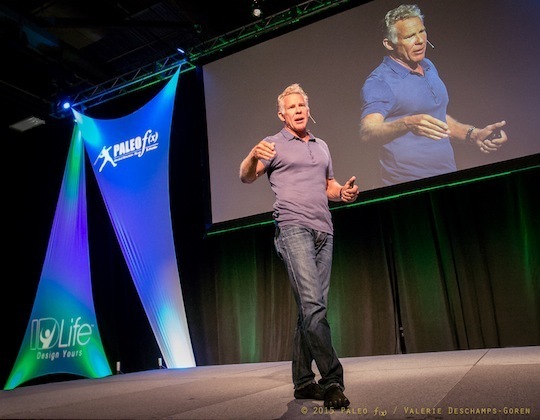 Howdy y’all! That’s something I picked up after almost a week in the thriving metropolis, Austin, Texas, for this year’s largest North American conference on all things related to Ancestral Health: Paleo f(x). If you were one of the lucky ones to attend this event and watch some of the presentations, then you know what a thrill it was to rub elbows in a hustling, bustling convention center filled with thousands of like-minded Primal/Paleo enthusiasts. The Palmer Events Center featured all the biggest companies in the Ancestral Health sphere along with over 30 expert speakers. Overall, there wasn’t a dull moment, an empty belly, or a lack of enthusiasm among the pop-up community of Primal/Paleo attendees. So let me give you the recap of my experience of this year’s show, starting with my keynote presentation.
Howdy y’all! That’s something I picked up after almost a week in the thriving metropolis, Austin, Texas, for this year’s largest North American conference on all things related to Ancestral Health: Paleo f(x). If you were one of the lucky ones to attend this event and watch some of the presentations, then you know what a thrill it was to rub elbows in a hustling, bustling convention center filled with thousands of like-minded Primal/Paleo enthusiasts. The Palmer Events Center featured all the biggest companies in the Ancestral Health sphere along with over 30 expert speakers. Overall, there wasn’t a dull moment, an empty belly, or a lack of enthusiasm among the pop-up community of Primal/Paleo attendees. So let me give you the recap of my experience of this year’s show, starting with my keynote presentation.
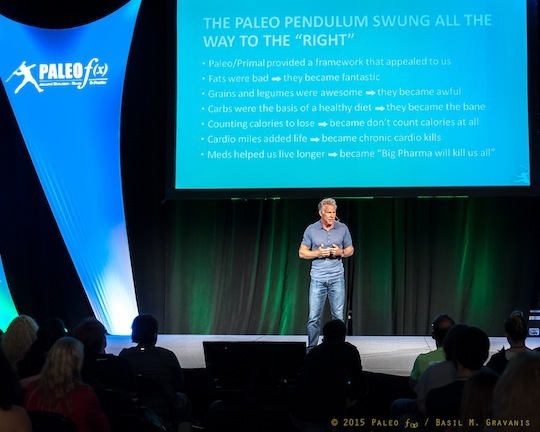
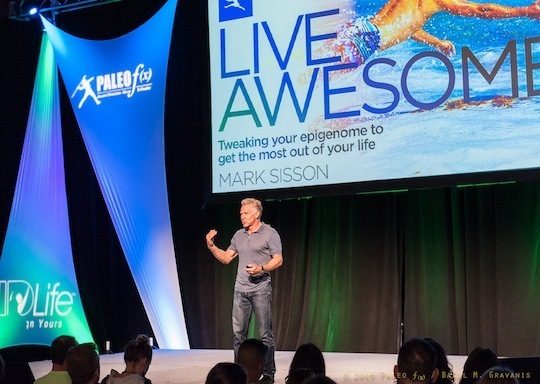
I gave a couple of presentations, the pinnacle of which was my presentation on Tweaking the Recipe to Build an Awesome Life. It chronicled my evolving perspective on the importance of temperance, moderation and the minimum effective dose in creating the best life possible with the least amount of sacrifice. Many of us in the Primal movement joined because we wanted to become happier, healthier and more fulfilled. We thought the answer would come from avoiding all the conventional misinformation out there that made us sad, sick, and lackluster. But in our pursuit of perfection, many of us lost our way in the quagmire of health dogma. In short, we became so militant about becoming perfectly Primal, we forgot that the end goal was to attain an awesome life, not achieve an elusive perfect score. My focus for this event was to emphasize that we should swing the pendulum back the other direction to give ourselves a little more breathing room in our lifestyle and dietary choices. We’re all here to live awesome, and if that means doing something outside of what the Paleo Police deem acceptable, or indulging in a glass of wine every so often, we should go for it!

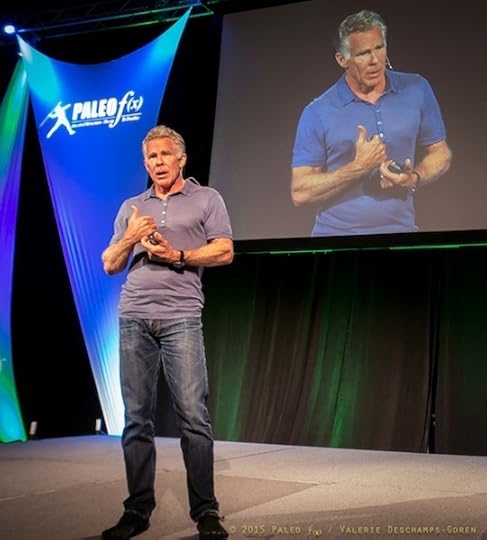
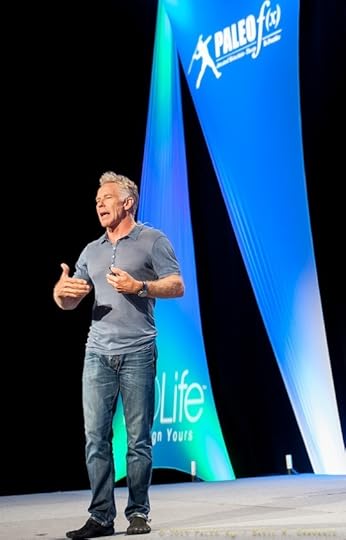
But the presentations weren’t my only opportunities to engage in meaningful dialogue about the latest topics in Ancestral Health. I also participated in several formal and informal interviews, including one with the folks over at The 21 Convention Podcast and another for an upcoming documentary on wheat by Cyndi O’Meara. Everyone at the show had a story, an idea, a dream, or a question that compelled them to attend. And that lead to days of lively, inspiring conversations and connections.
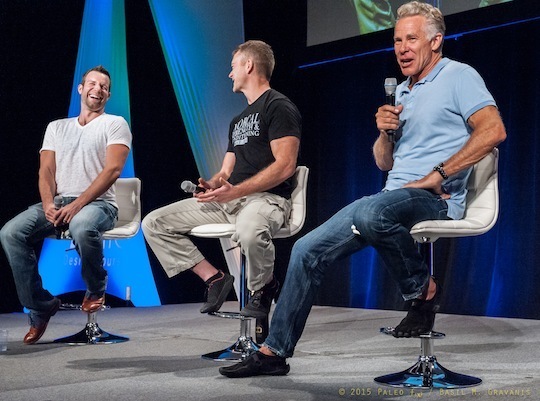
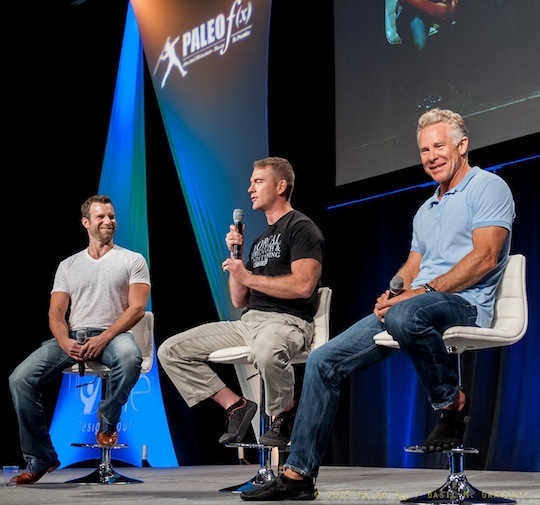
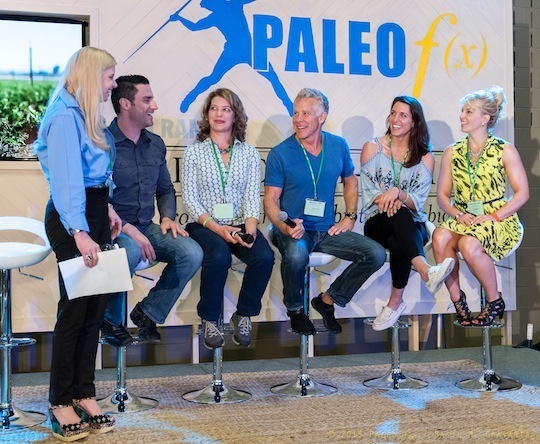
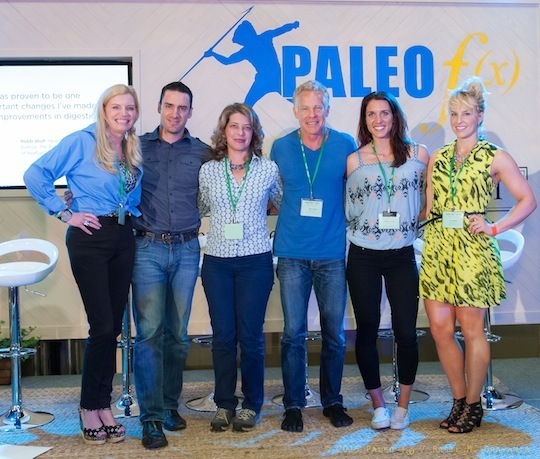
For those of you who attended the Expo hall of the event, you might have stopped off at our Primal booth, which featured our blockbuster hit from Primal Kitchen, Primal Mayo, along with our rock star educational course, The Primal Blueprint Expert Certification Program. Needless to say, we really killed it. We sold out of all 300 jars of Primal Mayo (with people still coming by and pleading for more!) and signed up 17 more eager students to The Primal Blueprint Expert Certification Program. We also passed out swag bags filled with Grok keychains, stickers, and Primal Fuel samples to the delight of every passerby who took the time to rock a selfie with a jar of Primal Kitchen Mayo. Plus, we had the pleasure of featuring Safe Catch Tuna and Jilz Crackerz to whip up some tuna salad at lunch time–a crowd favorite, as evidenced by the swarms of patrons surrounding our booth at lunchtime each day (check out this video about Jilz Crackerz founders Jill and Ron, shot by one of our Cert graduates over at Paleo Porn).



And if that warm reception wasn’t enough, we picked up some choice honorable mentions at the Paleo f(x) awards ceremony. We took away the gold, so to speak, by winning the top awards for Best Blog for Mark’s Daily Apple and Best Podcast for The Primal Blueprint Podcast, which, if you haven’t already, should check out, download, review and subscribe to—we’ve got an archive of golden information on there from experts all across the Primal/Paleo spectrum and have a number of top authorities in the field in our pipeline for upcoming episodes.
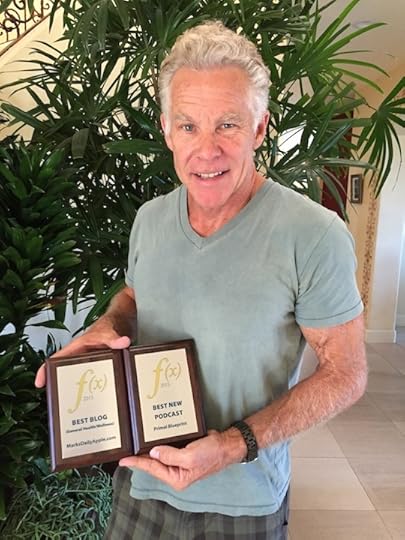
The fun didn’t stop on the festival grounds, either. Our Primal presence filled the streets, pervading every corner of Austin for the weekend. For example, our marketing team had the pleasure of attending a good old fashion Texas BBQ dinner hosted by Tin Star Foods, featuring choice meats, soft lighting, and the company of the biggest names in Paleo/Primal blogging. I even took a moment to stop by Austin’s premier stationary Paleo food truck, Picnik, for a long awaited meet up with its owner, Naomi Seifter. As I arrived, I was greeted by bags of Primal Fuel and Primal Kitchen Mayo lining the shelves, ready to feed the hordes of Paleo/Primal aficionados congregating in the grass for a mid-show meal and kickback.
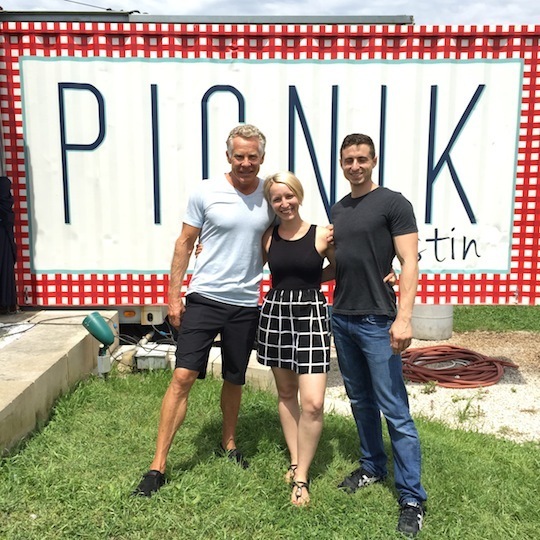
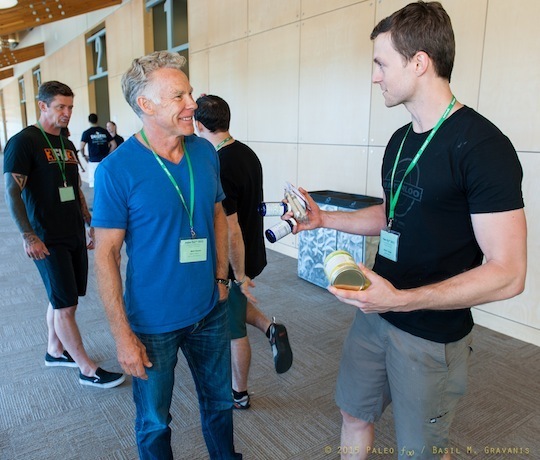
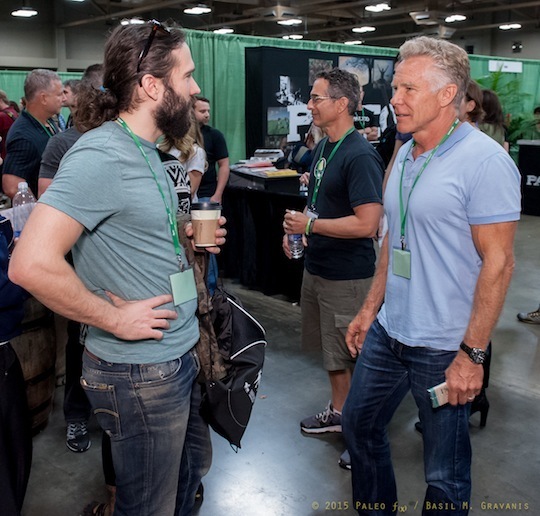

Finally, as happens so often at these events, I was overwhelmed and humbled by the success stories I heard. So many awesome people shared their personal stories with me, or told of using the Primal Blueprint “technology” or other paleo secrets to literally save their loved ones. In sum, the show was a hit, and I don’t think anyone walked away without a renewed sense of purpose, community, energy, and excitement for the future of the Primal/Paleo movement. We’re all in this together, and Paleo f(x) really drove that home.
Prefer listening to reading? Get an audio recording of this blog post, and subscribe to the Primal Blueprint Podcast on iTunes for instant access to all past, present and future episodes here.




May 4, 2015
Dear Mark: How to Give a Baby Probiotics, and Pre- and Post-Meal Exercise
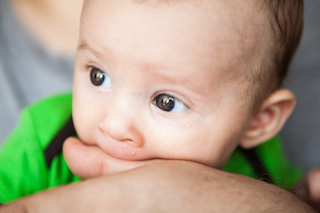 For today’s edition of Dear Mark, we’ve got a two-parter. First, in light of the recent paper showing that Lactobacillus rhamnosus probiotics given during the first six months of life protects against the development of conditions like ADHD and Asperger’s by age 13, how do you actually give the probiotics to a breastfed baby? It’s pretty easy, as you’ll find. And then, given that acute exercise performed before or after meals seems to change the metabolic response to those meals, would I recommend actually working out every time a person eats? It sounds a little excessive, but it might actually be a good move with some positive effects for people who have trouble with insulin and glucose issues.
For today’s edition of Dear Mark, we’ve got a two-parter. First, in light of the recent paper showing that Lactobacillus rhamnosus probiotics given during the first six months of life protects against the development of conditions like ADHD and Asperger’s by age 13, how do you actually give the probiotics to a breastfed baby? It’s pretty easy, as you’ll find. And then, given that acute exercise performed before or after meals seems to change the metabolic response to those meals, would I recommend actually working out every time a person eats? It sounds a little excessive, but it might actually be a good move with some positive effects for people who have trouble with insulin and glucose issues.
Let’s go:
Hi Mark,
I saw this from the blog:
“Infants who received the probiotic Lactobacillus rhamnosus for the first six months of life went on to develop zero neuropsychiatric disorders by age 13. Among 13 year olds who didn’t get the probiotic as infants, 17.1% had developed ADHD or Asperger Syndrome.”
Can you please talk more about this? I am confused how to supplement. My baby is due on Friday, and I have been told exclusively breastfeeding for the first six months is ideal, but my family has a huge history of ADHD and if it could be avoided with baby, that would be ballin’.
Thanks!
Kat
Kat, you and your impending baby sound like the perfect candidates for a little L. rhamnosus experimentation. Actually, you can start by taking the supplement yourself. The protocol for other studies showing various benefits (to eczema or atopy) for L. rhamnosus in babies include breastfed infants. For those guys, the mom takes the probiotics for six months in addition to the baby, who continues to take it until age two. Probiotics don’t seem to interfere with breastfeeding (and vice versa).
Do the probiotics you take make it into your breastmilk and into your baby? Maybe not. But a recent mouse study found that maternal supplementation of L. rhamnosus during lactation altered not the microbiota of the milk, but the microbiota of the mammary glands. This suggests that maternal probiotics have the potential to improve the health of the mammary glands and the immune health of the infants, without the need for probiotics in the actual milk.
The study you’re referring to did things differently: babies received the supplements for the first six months of life only. As I don’t have access to the full study, there’s no word on administration method, if the babies were breastfed, nor if the mothers also took it. I can’t imagine the fact that you’re planning to breastfeed will change anything, or nullify the probiotic’s effects.
How to administer?
Well, if you’re pumping and bottle feeding, you can just add a little L. rhamnosus powder to the breastmilk after it’s been warmed up. Avoid heating the milk with the probiotic already added, as this may damage the bacteria. This one should be the same strain used in the original ADHD/Asperger’s study. This one is for adults.
If you’re still breastfeeding, dip your finger in the powder and let your baby suck it off. At that stage in the game, they’ll suck on anything entering their oral vicinity. Alternatively, you can add a bit to whatever food you’re weaning them onto. The only problem is that few if any L. rhamnosus powder supplements are available and made exclusively for infants. I’m sure they’re coming, though.
My suggested move if you can’t find a good L. rhamnosus probiotic? How about some food? Give a little kefir. Kefir is full of L. rhamnosus, plus a dozen other strains Drink that as you nurse and introduce very small amounts to your baby, a finger at a time. By the time they’re weaning, you can give watered-down teaspoons and tablespoons and, eventually, small cups. Introduce very slowly. If your baby has an adverse response to your milk after you start drinking kefir, hold off and go more slowly.
As for safety, it appears to be pretty safe. Over a 12 year period, 644 preterm infants were supplemented with L. rhamnosus with zero adverse effects. And those are premies, who are more susceptible in general. A healthy term baby will have even less of a chance of a negative reaction.
Hi Mark,
You’ve mentioned a few times that emptying glucose reserves with intense exercise before a heavy carb load can help shuttle glucose directly to muscles (rather than fat storage). That got me thinking. Would it make sense to do a quick workout before EVERY meal (or at least occasionally before meals)? I’m thinking a quick set of pushups or air squats. Would that decrease the chance of fat storage before chowing down?
Thank you as always!
Jon
That might seem like overkill to some people, but honestly? There’s not much of a downside to doing that, and a whole lot of upside.
It would emulate the activity patterns of healthy pre-industrial peoples (whether paleolithic or modern hunter-gatherers, or traditional agricultural communities) who have to “earn” their food, either by hunting, gathering, walking to, or growing and harvesting it themselves. Most people reading this blog post aren’t moving constantly. We’re sitting (or standing) in the same general vicinity for hours on end. Many of us are wedded to our computers for work. We just don’t have the opportunity for movement that our ancestors did. And yes: lots of studies indicate that just setting aside a single block of 30-45 minutes for exercise, while beneficial, doesn’t counteract all the downsides of sedentary life.
I’d argue that doing some light (or even brief and intense) exercise before or after every meal would really improve how you partition the nutrients. More into muscle glycogen, less into fat stores, effectively “hacking” an ancestral pattern.
For instance:
Resistance training is good:
High volume weight training performed after meals blunts the spike in free fatty acids, probably because you’re burning more of them rather then allowing them to circulate and eventually get stored.
Cardio works:
Spending 45 minutes at 60% of your VO2max can lower the blood glucose response to a meal.
Moderate cardio can reduce postprandial lipemia. Walking works, too, but not quite as well as the moderate cardio in this study.
Intense exercise (sprints, intervals, circuits, etc) is another option:
Brief high-intensity “exercise snacks” performed prior to meals can reduce the glucose spike in insulin resistant individuals. In this study, the snacks took the form of either six minute-long uphill walking intervals, or six alternating minute-long uphill walking and resistance training intervals.
High intensity intervals performed right before meals is great at reducing postprandial lipemia. It’s far more effective than either moderate cardio or strength training.
Walking has a ton of support:
In obese teens eating high-fructose and/or high-glucose diets, walking 13k steps a day lowered postprandial insulin secretion.
Breaking up your sitting with brief walks (but not standing) reduces postprandial glucose.
15-minute post meal walks improve daylong glucose control.
Walking at 1.5 miles per hour for 45 minutes after meals improves the insulin and lipoprotein response.
In obese men, a 60 minute pre-breakfast walk at moderate intensity was better than a post-breakfast walk at improving body fat regulation and lipid metabolism, but both were better than no walk.
In sedentary young women, a post-meal walking session (30 minutes on a treadmill at 50% VO2max) was more effective at regulating lipid metabolism than a pre-meal session.
Even very slow post-meal walking can attenuate the blood glucose response. Think a leisurely stroll after a big dinner with friends.
Walking also changes how fats from meal are absorbed. In women, walking favors (the healthier) lower body fat deposition, while not walking favors deposition into the (more harmful) upper body fat stores.
From looking at the evidence, it’s clear that any kind of physical activity performed prior to or after meals will help mitigate any negative metabolic effects of the meals. Some may work better than others, but anything should help:
Air squats.
Burpees.
Kettlebell swings.
Pushups.
Jumping jacks.
Jump rope.
A walk around the block.
Sprints on the stationary bike.
Get creative. Just move! Get out of breath, get warm (on the verge of sweating), feel your muscles burn a little bit. It’ll all work.
If you can swing it without driving yourself crazy, go for it! I’d really be curious to see how it works. Maybe a trial run of two to three weeks, tracking body composition, weight, and performance.
Doing this, you might eliminate the need to go to the gym altogether. I’ve done a modified version of this before, peppering my day with short bursts of lifting or sprints or walks for weeks at a time. It worked okay for me, but I’m a gym guy — and probably always will be — so I prefer getting those dedicated workouts. But I absolutely felt “on” all the time when I was on the “workout snack” schedule, like I could go for a game of Ultimate or a long hike or a set of sprints at a moment’s notice. If you work in some resistance training to your pre-meal workout snacks, I think you could get away with it and get pretty fit and strong in the process.
Let me know how it works!




May 2, 2015
Weekend Link Love – Edition 346
 It’s the deal of the year for Mark’s Daily Apple readers: Register to win a $500 shopping spree to Thrive Market, and claim a 2-month free membership, $10 off your first order, 4 Primal eBooks, a $10 coupon to PrimalBlueprint.com by May 6 (this Wednesday!). Learn all the details here.
It’s the deal of the year for Mark’s Daily Apple readers: Register to win a $500 shopping spree to Thrive Market, and claim a 2-month free membership, $10 off your first order, 4 Primal eBooks, a $10 coupon to PrimalBlueprint.com by May 6 (this Wednesday!). Learn all the details here.
Research of the Week
It’s official: HFCS raises heart disease risk, according to UC Davis.
According to the Environmental Working Group, women put an average of 168 chemicals on their body daily. It may be time for some updated FDA regulation.
New Primal Blueprint Podcast

Episode 65: Dean Dwyer: Brock Armstrong interviews Dean Dwyer from the Toronto studio. Dean is well known both as a speaker at Paleo f(x) and for his books, Make Shift Happen and The Willpower Solution. In episode 65, he talks about the essential emotional, psychological and behavioral tips that help maintain long-term weight loss. Learning how to reach your health goals is only half the battle: sustaining your gains is the other. If you’ve ever succumbed to yo-yo dieting or thwarted weight loss, then you won’t want to miss this episode.
Each week, select Mark’s Daily Apple blog posts are prepared as Primal Blueprint Podcasts. Need to catch up on reading, but don’t have the time? Prefer to listen to articles while on the go? Check out the new blog post podcasts below, and subscribe to the Primal Blueprint Podcast here so you never miss an episode.
The Importance of Non-Negotiable, “No Matter What” Rules
The Year’s Biggest Deal from Mark’s Daily Apple (Expires May 6)
Do Low-Carb Diets Cause Insulin Resistance?
Interesting Blog Posts
The best active desk designs for your body and mind.
Garden growing tips for every size garden.
Is your cabbage head done cooking? Test it with a cake tester!
Media, Schmedia
Looks like Bill Gates is reneging on his vision of a vegan future.
The U.S. government is lowering fluoride levels in our water because kiddoes are getting splotchy teeth.
May 9th is an unofficial new holiday—free-range parenting day. Will you be letting your kids walk home alone?
Everything Else
The FDA blows the whistle on the saturated fat content of Kind bars…but, is the nitpicking warranted?
An editorial published in the British Journal of Sports Medicine busts the myth about exercise.
The United States is finally waking up to the not-so-secret truth about yogurt the rest of the world already knows.
Recipe Corner
Time to bust out the crockpot for some Crockpot Stuffed Peppers.
Focus on your gut health with fermented Paleo Red Apple Ginger Sauerkraut.
Time Capsule
One year ago (May 3 – May 10)
A Primal Primer: Leaky Gut—A still trending topic.
How to Overcome the “I’ll Do It Tomorrow” Instinct—Because we could all use a refresher.
Comment of the Week
Look in the mirror. Do you like what you see? If so, throw out the scale.
– Two weeks in a row! Go, M!




Bangin’ Liver
 This is a guest post from Mary Shenouda, Paleo Chef and Lifestyle Coach
.
This is a guest post from Mary Shenouda, Paleo Chef and Lifestyle Coach
.
Mary, here! You may know me as Mary, The Paleo Chef. Or perhaps you know me as the #EatPlayCrush Girl on Instagram. Or maybe you don’t know me at all, in which case, nice to virtually meet you.
I am here today to spread some OFFAL LOVE!
We all know the benefits of having liver in our diet, BUT I know many of you have no idea how to cook it in a way that is also delicious.
Enter Bangin’ Liver from my Eat Play Crush 5 Day Guide!
Wait, don’t scrunch your face up just yet. Every single client that has claimed to detest liver is now a be’liver! Get it?
Is this mic on? *raisesbrow*
Okay, lame joke, I know but I promise I didn’t name this recipe Bangin’ for no reason.
If you end up loving this recipe and want to get your hands on my complete Eat Play Crush 5 Day Guide, use PRIMALBLUEPRINTEPC at checkout on my website to download your copy for $8 as a Thank You for giving this offal recipe a try!
Trust your gut,
Mary
Bangin’ Liver
What you’ll need:
1/3 cup grass fed butter or ghee
1 pound calf’s or chicken liver, chopped
6 garlic cloves, crushed and minced
1 large green bell pepper, chopped
1 chili pepper, seeded and chopped (add or subtract depending on spice preference)
1 tablespoon cumin powder
1/2 teaspoon cinnamon
1/2 teaspoon ginger powder
1/4 teaspoon cloves powder
1/4 teaspoon cardamon powder
Juice from 1 lemon
1 teaspoon salt (more as needed to taste)
What to do:
Sprinkle some salt on the chopped liver.
Heat up butter/ghee in a large frying pan on med-high (keep the cover nearby). Add liver and stir carefully, allow the liver to brown.
Once the liver has changed colors, add ALL the ingredients (save half the lemon juice) and mix well.
Once everything is totally coated and there is a good sizzle sound going on, reduce heat to med-low. Cover and let cook for another 10-15 minutes.
When serving, be sure to scrape up the browned-sauce that has occurred in the pan aka FLAVOR PUNCH. Serve with the remaining lemon juice, pinch of salt if needed, and fresh chopped parsley.
Personally, I top it off with a drizzle of high quality extra virgin olive oil and cayenne.
Enjoy!
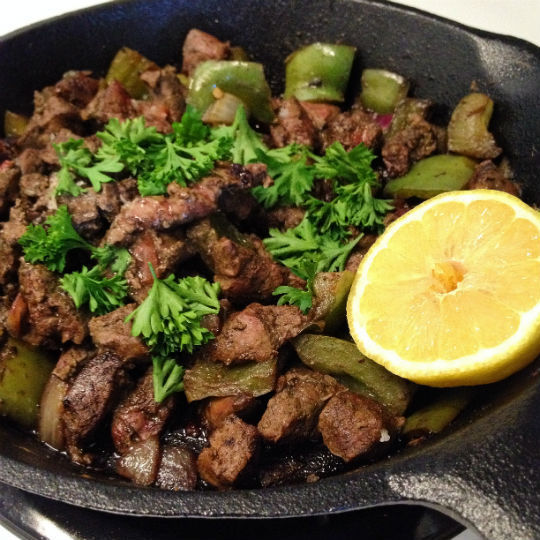
Not Sure What to Eat? Get the Primal Blueprint Meal Plan for Shopping Lists and Recipes Delivered Directly to Your Inbox Each Week



May 1, 2015
Going Primal – Mentally, As Well As Physically
It’s Friday, everyone! And that means another Primal Blueprint Real Life Story from a Mark’s Daily Apple reader. If you have your own success story and would like to share it with me and the Mark’s Daily Apple community please contact me here. I’ll continue to publish these each Friday as long as they keep coming in. Thank you for reading!
 I first learned of The Primal Blueprint in the summer of 2010 when I spent the summer at my now husband’s parent’s in Maine, USA. I had been stuck at 135 pounds following a six month trip around South East Asia and Australia in 2007, and hadn’t been able to get back to my 120 pound pre-traveler weight, regardless of how many calories I limited myself to or hours spent on the treadmill. I met Tyler in 2008 in post-grad in the UK, when he was a vegetarian, daily gym-goer and runner. We ate relatively healthily in CW terms, I ate less meat, and worked out way more than I had before, but I struggled to lose any weight, despite the fitness regime. I wasn’t traditionally “fat,” but my muscular frame was more chunky than lean.
I first learned of The Primal Blueprint in the summer of 2010 when I spent the summer at my now husband’s parent’s in Maine, USA. I had been stuck at 135 pounds following a six month trip around South East Asia and Australia in 2007, and hadn’t been able to get back to my 120 pound pre-traveler weight, regardless of how many calories I limited myself to or hours spent on the treadmill. I met Tyler in 2008 in post-grad in the UK, when he was a vegetarian, daily gym-goer and runner. We ate relatively healthily in CW terms, I ate less meat, and worked out way more than I had before, but I struggled to lose any weight, despite the fitness regime. I wasn’t traditionally “fat,” but my muscular frame was more chunky than lean.
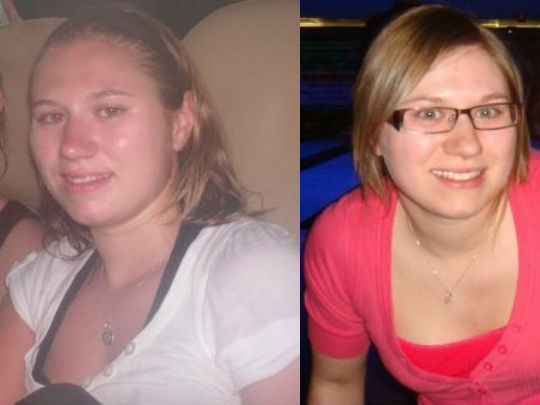
2007 Traveling in Australia: 135 pounds, 2009
Tyler found MDA through another blog, and interested by the contrasting information to what he’d always thought was right, he gave up the grains and quickly leaned out, while still being a veggie. I arrived in the US and said “I’ll give it a try, and if I don’t feel any better, then what the hell.”
We soaked up the research, cooking “real” food each day with Tyler suddenly starting to eat meat again, and we felt better than ever. The idea of not having to run for an hour each day was amazing, and having suffered from shin splints and knee problems, it all made sense. I realised the feeling of being “painfully full” was never that at all, but the result of eating two bowls of pasta, with garlic bread, or our Sunday night takeaway of pizza and chips as our one “indulgences” of the week. Our friends thought we were crazy, reciting the “everything in moderation” mantra, and saying “what a load of rubbish not eating bread was,” and “how are you never going to eat bread again?” In all honesty, giving up bread and pasta was easy, as long as it wasn’t around, but the sugar cravings never really subsided and for the last 4.5 years I have battled with the ‘need’ to eat it. My friends couldn’t understand the lifestyle, and never really catered for me at parties or gatherings, so I ended up succumbing to the foods that make me sick, which didn’t help me at all.
I knew I was eating the wrong things, that my allergies to cats went away when I ate Primally, my hay fever disappeared (I could literally get a “cold” immediately after eating bread and cake) and I would maintain around 112 pounds, but working in a grocery store being surrounded constantly by the candy, cookies, and novelty seasonal treats was making it impossible for me to stop binging on these poisonous foods (I’m not blaming anyone else here; I know it was down to me). I was still lighter, sticking around 122 pounds, but I knew my natural plateau was 10 pounds less than this and felt guilty every time I fell off the wagon. My natural build helps me look fit, as I put muscle on easily, and my friends are always amazed at my “six pack.” I was still feeling okay, but knew when I was slipping when I was sleeping late all the time and had colds and headaches more regularly.

Summer 2010: 125 pounds, Spring 2011, Summer 2013
Just before Christmas 2013, I started having pain in my left arm and around the heart area of my chest after eating sugary foods, and my GP dismissed it as indigestion due to the fact I didn’t eat sugar every day. It kept coming, and another GP said it was muscular skeletal, which made more sense, considering some simple observations such as my job replenishing shelves, which of course made me relieved, but the fear it had been my heart had kicked me into gear to do something different.
In early April of last year, it felt like a fog had lifted in my mind. I listened to all the podcasts (up to week 12 by then) in a week on my commute, and felt I was learning the information all over again. I bought the 21-Day Total Body Transformation guide, and surrounded myself with Primal snacks, which I keep on hand for when I’m feeling peckish, or when I crave sugar.
The sugar struggle remained a hilly road until Autumn 2014. I was still hitting rocky patches, still drinking beer, still not completely avoiding gluten when eating out, which all came to a head on a weekend in Edinburgh late November last year. I had developed psoriasis, which I think was due to extreme stress while Tyler was applying for “indefinite leave” to continue living and working in the UK. I had drank a lot of beer and whiskey in Scotland (when in Rome) and eaten my fair share of black pudding and haggis, which always contain oats.
Truthfully, I felt awful, my psoriasis spread like wildfire (you could count the growth of lesions hourly) and the stabbing pains in my stomach were telling me something was wrong in more ways than it had been before. Simultaneously, my best friend had recently started the Autoimmune Protocol, to combat ulcerative colitis (I’d never heard of AIP), and she informed me psoriasis was an autoimmune disease. I started researching this as much as I could, and suddenly I knew what I had to do. (My mother has had Multiple Sclerosis for 49 years, and seeing her slow deterioration over my lifetime spurred me on further to combat my own, albeit less serious autoimmune disease.) I followed AIP for a month or so before Christmas, and it was the best thing I’ve done.
I now know absolutely, definitively, that I will never eat grains, sugar or gluten again. Even paleo/Primal “treats” don’t float my boat like they used to (the more sugar I eat, the more I want). It can still be a struggle, when there are sweets and chocolate lying around at work, and once or twice I’ve picked one up and put it back down again, but it is getting better.
I now sit at around 119 pounds, although I don’t worry too much about that anymore as I FEEL healthy, and can honestly say I don’t get energy crashes in the afternoon, that I can often wait until noon to eat (sometimes I choose not to because I JUST LOVE FOOD!), that when I get my SLEEP and STRESS dialed in, EVERYTHING ELSE comes with it, that when I sprint I feel AWESOME, when I look in the mirror I feel STRONG. My job keeps me active, as I move all day (15000 steps and counting) and lift heavy things (crates of potatoes and onions!). The only issue is getting adequate sunlight which is sometimes difficult in the UK outside of summer months!
It’s a lot easier now to find like-minded people, even in the UK, (Tuesday night 8-9pm, #paleohour on Twitter!), and I’ve recently started a blog (shameless plug!) writing about places to eat Paleo in the UK (GrainFreeGrazing.wordpress.com), to try and “give something back.”
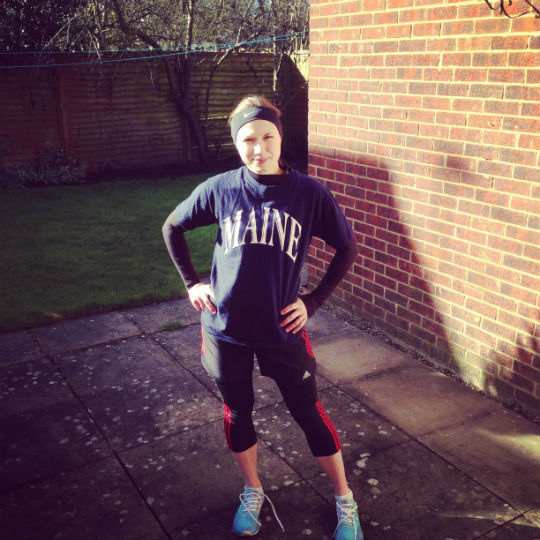
Thank you, Mark, for the work you and your team do. I am eternally grateful for the day Tyler found MDA, it has truly changed my life for the better.
Rachel




April 30, 2015
The Importance of Non-Negotiable, “No Matter What” Rules
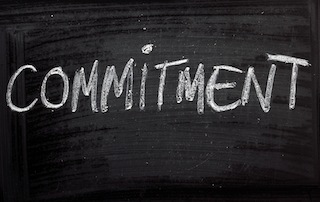 Behind all good intentions – the long-range vision, the ultimate goals, the short-term strategies or daily routines – is our bottom line. What is the least we are willing to accept from ourselves in a given day? This question is probably the most important you will ever ask yourself.
Behind all good intentions – the long-range vision, the ultimate goals, the short-term strategies or daily routines – is our bottom line. What is the least we are willing to accept from ourselves in a given day? This question is probably the most important you will ever ask yourself.
Experience tells me the biggest obstacle for people is their perception – their perception of their circumstances, their perception of time, their perception of their bodies, their perception of their potential. Anyone can dream up goals, but it’s how we weave our intentions into our daily reality that matters.
We go through the day perceiving our own intentions to be important but negotiable. Simultaneously, we consciously or unconsciously view others’ intentions for us (e.g. our time and energy) as fixed, non-negotiable. And there’s where the process falls apart.
Because here’s the deal… If all of our daily goals are negotiable, they’re all disposable.
I get it. We all have lives with moving parts. Work takes us out of town or well past standard quitting time. Kids get sick – or the babysitter does. Money is tight this month – or year. The weather isn’t cooperating. The car is in the shop. We get low on steam or enthusiasm. We hit periods of major transition in our lives that are sparked in a moment but drag on for months.
But these facts will never change. Life will always, always, always fluctuate. If we wait to begin a health commitment until things “settle down,” we’ll be sitting at the curb forever. If we tell ourselves we won’t have to negotiate away our intended action steps when we have an easier week, we’ll likewise forgo progress. Reality dictates that circumstances will encroach upon your time. People will ask things of you at the last minute. Your energy will feel depleted before you’ve gotten to your own priorities. And there’s where we decide if it’s up to us to let go of x, y or z plan we had for ourselves.
Life, to a certain extent, does require flexibility of us. If we clutch at predictability too much, we’ll either make ourselves and everyone around us miserable or we’ll dwindle our lives down to almost nothing. Additionally, there absolutely are days when skipping your workout, or otherwise taking it easy on yourself is the best decision you can make. (For those that caught my Paleo f(x) talk this weekend, you’ll know what I’m talking about.)
We can, however, choose to draw our lines in the sand when we feel it’s important.
I’m talking here about a non-negotiable, no-matter-what rule you never break (barring only the most extreme circumstances).
At the end of the day, no matter how insane, what is the one thing you make sure you do for yourself? The fact is, if you don’t make an ironclad claim on your day, the rest of the world (with its limitless needs and predicaments) will be happy to swallow it whole for you.
I’m not talking about a pie-in-the-sky goal or even a goal period. Non-negotiable rules should be simple practices that you commit to every day, again, no matter what. I’m talking here about a least common denominator – a minimum effort you sign on for with a blood-inked signature. You mean business. This doesn’t mean you shouldn’t do more than this one action each day, but it’s the one you won’t ever go “below.” Going back to the introductory challenge, it’s the very least you’ll expect of yourself in a given day.
The key is setting a non-negotiable rule is to envision a single, straightforward objective that you will fulfill daily – no excuses. Think of it as a linchpin to organize your day around or even a mantra to live by. Either way, it will keep you directed toward your health every day.
For example, a fitness buff might say, “I make sure to sweat every day – no exceptions.”
Another person might say, I will meditate or do yoga for a half an hour daily.
You could say, I’ll always be in bed by 10:30 p.m.
Another option might be that you will walk 3 miles/1 hour/10,000 steps each day no matter what.
For a different person, it could be committing to 20 minutes of body weight exercises every day.
If you feel you need to see your non-negotiable commitment in a different light, you could decide you will never skip gym workouts on Monday, Wednesday and Friday. Even if you adjust the workout itself, you will get your butt on the gym floor those days.
If your focus is more on diet right now, you could commit to eating a certain amount of protein or fat or carbs each day.
Another choice around food would be to intermittently fast for a portion of every day (or the three set days a week), even if it’s just deciding you won’t eat anything after 7:00 p.m.
Alternatively, it could be eating one minimal carb meal a day.
The function of these rules, of course, is multi-fold. Sure, the immediate and obvious benefit is that you work in some kind of healthy behavior each day – and you establish a true, fixed cornerstone for your health commitment. In this sense, you never totally abandon your vision. Every day you take a step to thrive. However, you’ll also benefit from the impact of association: one positive choice empowers another.
If you know you’ll be doing one healthy action for yourself – particularly if you do it early in the day – you’ll automatically support a certain perception of yourself and of your day. I’m living the Primal Blueprint today. I just made Grok proud. Suddenly, you’re more motivated to keep the momentum going.
The examples above can seem very simple, even elementary. If they are, make your non-negotiable more ambitious, but remember that this is your bottom line, not your upper limit. Making a no-matter-what commitment doesn’t keep you from doing better because the fact is, you should nearly every day.
Likewise, our non-negotiable action can – and likely should – change. My non-negotiables are different now than when I was making the transition from elite training to Primal living. At that point, I was cutting my workout duration because more of my time was spent coaching clients. I was changing my diet and fitness to address long-standing inflammation related issues. I was recovering more and doing less. Today I’ve expanded my sense of health to a lot of things that have nothing to do with either diet or fitness, and sometimes I change my rule to reflect that priority.
The ultimate purpose of a non-negotiable might just be the practice itself. The better we get at seeing our own goals as essential and other demands on our time as negotiable, the more we come to value the commitment to our own vitality – and likewise the more creatively we adapt to filling our other obligations in novel ways.
We use our time and energy better, knowing we have to save something for our own no-excuses goal. We assess the time we spend with family or friends and ask if we’re really prioritizing the experiences that mean the most and draw us closer. We begin thinking about what really feeds the quality of work and relationships as well as how we can foster the health that allows us to give the most over time. In this way, think of setting a non-negotiable rule as a daily practice that begins with a minimal target but expands toward a much larger life impact.
Thanks for reading today, everyone. What are your non-negotiable rule? Share them in the comment board. If you don’t have one, make your commitment now. Have a great end to the week.




Mark Sisson's Blog
- Mark Sisson's profile
- 199 followers



